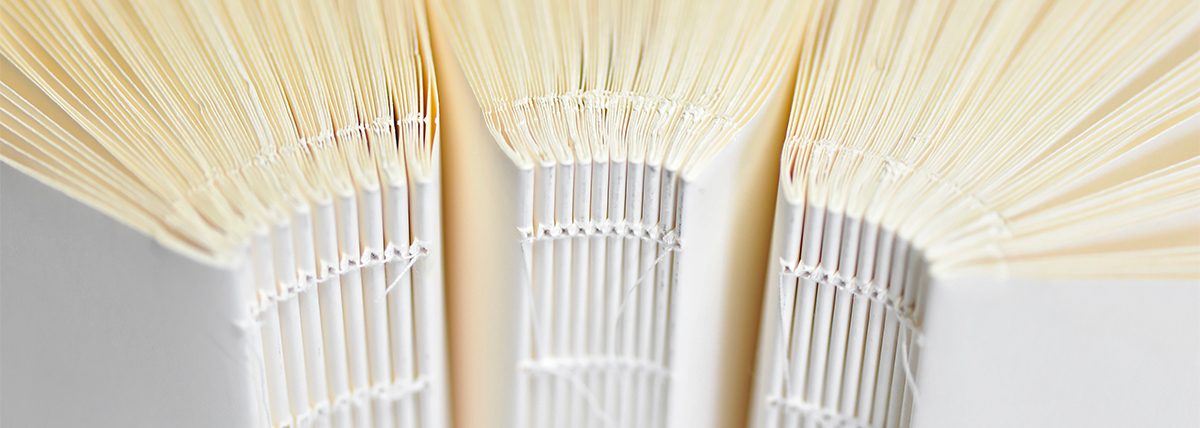The Escourbiac printing company and the Fondation des Treilles have created the “Prix Escourbiac – Fondation des Treilles”. This prize consists of a grant for the publication of a photographic book linked to the Mediterranean world. In January of each year, it is awarded by the jury for the Photography Prize.
Candidates
Applications are open to all professional photographers who have already exhibited or published their images, regardless of age or nationality.
The publication project must necessarily have the Mediterranean world as its theme.
Only photographers whose photographic and editorial project is already completed can apply.
Candidates cannot apply for the Escourbiac – Fondation des Treilles Prize and the Fondation des Treilles Photography Residency Prize in the same year.
Applications must be sent before October 1 of the current year.
They are received via an online form including a curriculum vitae and an argument on the submitted project. At the same time, candidates must send a PDF document containing all the images and all the texts of the book to prix.escourbiac@fondationdestreilles.com. We specify that it is useless to make a layout of the work. The final model will be produced in collaboration with the Odyssée Editions.
All applications are evaluated by the jury, which designates a laureate.
The residence
The winner is welcomed on the Treilles estate for a period of 15 days to one month in March or April of the current year. Their accommodation and meals are paid for by the Foundation, which allow them to devote themself fully to their publication project. During their stay, they are accompanied by the publisher to finalize the work.
The book
The publishing and production costs of the book are entirely borne by the Odyssée publishing house and the Escourbiac printing company, which are also responsible for the communication and distribution of the book.
Each year, the book is presented during the opening week of the Rencontres Photographiques d’Arles (Arles photographic meetings).
The laureates over the years
Jeanne Taris
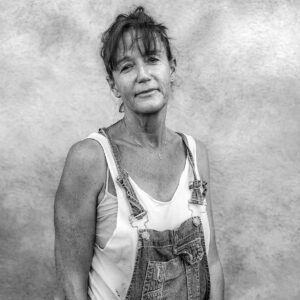 À 17 ans, Jeanne Taris découvre la photo. Mais elle œuvre sans rien trier, rien imprimer, rien montrer. Elle capture des moments bruts auprès d’hommes et de femmes atypiques avec qui elle noue des relations fortes. En 2015, remarquée lors d’une rencontre Leica, elle commence une deuxième vie : elle partage son travail à travers des séries au long cours, en immersion toujours. De la Côte d’Ivoire au quartier gitan de Perpignan, Jeanne Taris construit pas à pas le récit sensible de moments chez les autres, dessinant une fresque plus grande.
À 17 ans, Jeanne Taris découvre la photo. Mais elle œuvre sans rien trier, rien imprimer, rien montrer. Elle capture des moments bruts auprès d’hommes et de femmes atypiques avec qui elle noue des relations fortes. En 2015, remarquée lors d’une rencontre Leica, elle commence une deuxième vie : elle partage son travail à travers des séries au long cours, en immersion toujours. De la Côte d’Ivoire au quartier gitan de Perpignan, Jeanne Taris construit pas à pas le récit sensible de moments chez les autres, dessinant une fresque plus grande.
Talent émergent Polka pour les Zooms du Salon de la photo 2018, Jeanne Taris remporte le Leica Galleries International Portfolio Award au Festival Voies Off d’Arles en 2018 et le Kuala Lumpur International Photoawards en 2019 et 2020. Elle est finaliste du Grand prix Albert-Khan 2020.
Ses photos sont publiées dans Polka, 6 Mois, Vice, Washington Post, LFI magazine, Il Fotografo, News from Photografers et exposées dans des musées et galeries en France et à l’international (Italie, Malaisie, Espagne, Écosse, Nouvelle-Zélande, Suisse, Turquie, Maroc). Elle expose également son travail à l’occasion de la Nuit des images au Musée de l’Elysée à Lausanne et à la Collection Lambert, Musée d’art contemporain en Avignon. Aux Rencontres d’Arles 2023, son travail est présenté dans l’exposition Lumières des Saintes. En 2023, ses œuvres rentrent dans la Collection Lambert Musée d’art contemporain en Avignon et dans la collection Des Rencontres D’Arles.
Son projet
Le travail contemporain de Jeanne Taris autour des pèlerinages Gitans des Saintes-Maries-de-la-Mer et de Lourdes s’inscrit comme un travail au long cours.
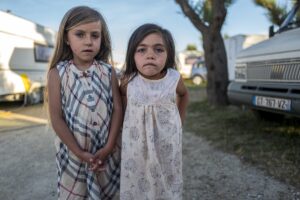 Aucune image ne semble possible sans une intimité profonde, sans un temps inerte passé à observer et à créer une observation participative proche d’une enquête de terrain tout en portant un engagement esthétique assumé.
Aucune image ne semble possible sans une intimité profonde, sans un temps inerte passé à observer et à créer une observation participative proche d’une enquête de terrain tout en portant un engagement esthétique assumé.
Lors des processions et des dévotions, Jeanne Taris saisit l’émotion au plus près de la peau, montre les larmes et la sueur, les corps qui travaillent et se déforment dans le bouillonnement, l’effervescence et l’exaltation. Elle montre à la fois le poids de la foule qui emporte tout mais aussi la solitude des sentiments et les passions de chacun. Suivant une présence régulière au fil des années, auprès des mêmes familles, l’expérience du temps modèle profondément l’expérience photographique.
Chaque moment se complète au fil des années : le réveil et la torpeur du matin, les préparatifs et les réunions, le temps de la procession, les fêtes et célébrations qui se prolongent jusque dans la nuit, les opérations latérales qui prennent place à ce moment et dont la gamme s’étend à l’infini.
La vie ainsi suit son cours toujours interrompu, les images saisissent le théâtre de cette vie toujours recommencée.
Francine Cathelain
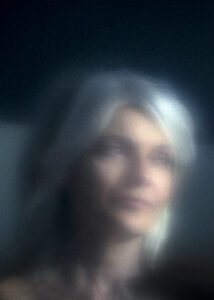 Arrived at the image through movement, Francine Cathelain is also a scriptwriter for the cinema, her work as an author is however resolutely oriented towards the fixed shot. That of the photographic medium. Her series, nourished by many travels and by intimate territories, are often thought for the book. They borrow from her cinematographic experience the work on light, rhythm, textures and a certain desire for narration.
Arrived at the image through movement, Francine Cathelain is also a scriptwriter for the cinema, her work as an author is however resolutely oriented towards the fixed shot. That of the photographic medium. Her series, nourished by many travels and by intimate territories, are often thought for the book. They borrow from her cinematographic experience the work on light, rhythm, textures and a certain desire for narration.
Her project : And I will let my eyes fly (provisional title)
Projected, a few years ago, into a solitary, intimate and singular experience, born from the encounter between a place, a moment and a particular state, in the heart of a remote South, her photographic book project wishes to share the story of this exploratory journey, imbued with the gift of presence possessed by certain Mediterranean territories, between mystery and plenitude, perceptible and impalpable, reality and fiction. Or rather imaginary. In this sense, this project hopes to invite everyone to make it their own.
A few words written recently watch over the memory of these salutary moments and will find their place in the body of the book, to the rhythm of a furtive dialogue with the images.
I lost it.
Exhausted in the folds of depths without return.
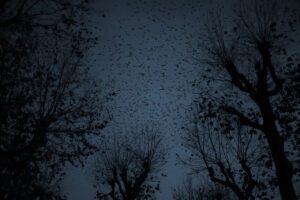 Afterwards, failing to do anything but walk.
Afterwards, failing to do anything but walk.
Caught up in the moment, with a shaky heart and diluted thoughts.
Crossing the air and pacing the wind. Far from the villages prostrate in the cold velvet of winter that the gusts of wind cannot cheer up. Hollow wanderings on wild paths. Everywhere the dark mountain crimped the horizon.
The senses are stretched, distended. Antigravity of the body. Let yourself be brushed by almost sacred veils without believing but perceiving, perhaps, a celestial architecture, a delicate asylum.
The sky is a cradle.
Exhale fears and go beyond the shadow.

